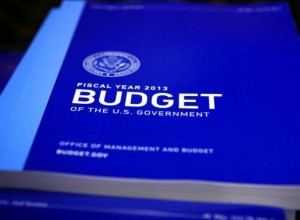By SUA Staff – All the talk about cuts and ‘sequestration’ is mind-numbing to say the least. If you listen to or read what the White House has issued, you’d be hiding under your bed in a fetal position. If you listen to reason though, after cutting through the political spin and tortured explanations, you see a different picture.
Check the actual budget numbers here. As required by the Budget Control Act of 2011, Obama finally reported on the impact:
These are among the findings in a new 394-page report by the White House that was delivered Friday to Congress, detailing line by line what will happen next year if Washington fails to act to head off about $100 billion in military and domestic spending cuts scheduled to begin Jan. 2. The Obama administration had been reluctant to specify the impact of sequestration, as the automatic, across-the-board spending reduction is called. But once forced to do so by Congress, the White House budget office did not scrimp on the details. (Read more here.)
Always remember one fact – there are no cuts in the baseline budget – its just a reduction in planned increases to the non-existent “Un-Budget.” The cuts they speak of are in the increases now ‘portraying’ an actual budget.
Many followed the “sky is falling” lead and gave us their look at the impact based upon White House and administration assertions, but those of course are a function of leadership or lack thereof. Read the article by Matthew Green at KQED: “The Sequester Explained in Plain English” and you will see how far they reach; try not to laugh too hard.
But, this week, even Obama had to walk back a lot of what was being told but the real impact is on the military but indeed the ‘sequester’ is in place and next is the CR, or continuing resolution:
Across-the-board federal spending cuts began Friday, clearing the way for a series of budget battles that will consume much of Congress’s energy and threaten to eclipse other items on President Barack Obama’s second-term agenda.
Mr. Obama signed an order late Friday directing $85 billion in cuts to domestic and defense programs, after holding a fruitless meeting with congressional leaders who remained at odds over how to avoid the reductions, known as a sequester.
The more immediate concern is the need to keep the government operating after March 27. Next week, the House is expected to pass a Republican bill to extend funding for many government programs—including defense, education, and veterans’ benefits—at the ‘pre-sequester’ level of $1.043 trillion for the fiscal year ending Sept. 30, the same level as the year before. But it would also carry a provision saying that sequestration would apply. That would bring the cost of the bill below $1 trillion, which is considered key to winning support from House GOP conservatives. (Read more here.)
Of course, a detailed look at the many duplicated programs, other waste, fraud, and corruption would have easily eclipsed the measly 2% the $85 billion ‘sequester’ this year if they were removed. Obama had promised in 2008 that he would do just that, but alas, in over four years, none of that took place. “And, absolutely, we need earmark reform. And when I’m president, I will go line by line to make sure that we are not spending money unwisely.”
The only persons of note who did look were Rep. Paul Ryan (R-Wisc) (See his budget here.) and Senator Tom Coburn, M.D. (R-OK) who has been producing his “Waste Book”. Take a look at the 2011 and 2012 reports from his office. Here are a few highlights:
- $75,000 to promote awareness about the role Michigan plays in producing Christmas trees & poinsettias.

- $15.3 million for one of the infamous Bridges to Nowhere in Alaska.
- $113,227 for video game preservation center in New York.
- $550,000 for a documentary about how rock music contributed to the collapse of the Soviet Union.
- $48,700 for 2nd annual Hawaii Chocolate Festival, to promote Hawaii’s chocolate industry.
- $350,000 to support an International Art Exhibition in Venice, Italy.
- $10 million for a remake of “Sesame Street” for Pakistan.
- $35 million allocated for political party conventions in 2012.
- $765,828 to subsidize “pancakes for yuppies” in the nation’s capital.
- $764,825 to study how college students use mobile devices for social networking.
- The most unproductive and unpopular Congress in modern history – (Congress) $132 million
- Professional sports loophole – (Taxes) $91 million
- OH SNAP! Junk food, luxury drinks, soap operas, and billions of dollars in improper food stamp payments – (Department of Agriculture) $4.5 billion
- Oklahoma keeps unused airport open to collect federal checks – (OK) $450,000
- Moroccan pottery classes – (U.S. Agency for International Development) $27 million
- Out-of-this-world Martian food tasting – (HI) $947,000
- When robot squirrels attack – (CA) $325,000
- USDA’s caviar dreams – (ID) $300,000
- Bailed out tourist boat sinking private business – (AK) $3.3 million
- Phantom, unused grant accounts draw fees – (Department of Health and Human Services) $2 million
Army Details Where Sequestration Will Hit Hardest
By Michael Hoffman – Military.com
Army leaders got down to the gritty details of how sequestration will affect the service with examples ranging from the reduction of day care hours to delaying weapons programs to asking soldiers to collect trash on post.
On Tuesday, the Army executed a four-hour, service-wide planning exercise to outline the choices service leaders will have to make should Congress fail to avert the $500 billion in budget cuts associated with sequestration, which is slated to start Friday.
The Army stands to lose the most from their budget mainly because it’s the largest service in the military. In 2013, Army budget officials must cut $18 billion from the service’s budget before Oct. 1 should sequestration occur.
The $18 billion cut is not solely due to sequestration. An extension of the continuing resolution that funds the military at 2012 levels will cost the Army $6 billion in 2013. Another $6 billion bill is included in the $18 billion total due to emerging requirements from the war in Afghanistan, Maj. Gen. Karen Dyson, the director of the Army’s budget office, explained.
No matter the source, Army leaders said Wednesday that the service will have to make drastic cuts across the Army to services, training and operations. The sequestration legislation handcuffs Army officials from protecting certain accounts other than pay, operations in Afghanistan and Korea, and the Wounded Warrior program.
Making matters harder for officials will be the furlough that Defense Department civilians must take as part of the Pentagon’s cost saving measures in dealing with sequestration. Starting in April, civilians will have to take one unpaid furlough day per week until Oct. 1. This will limit the services the Army can provide and make it tougher to make up for the reduction in funds, Dyson said.
Brig. Gen. Curt Rauhut, the director of resource management for Installation Management Command, went as far to say the service will have to ignore holes in roofs and have soldiers collect trash on post. Funding for sustainment, restoration and modernization of the Army’s installations will be reduced by $2 billion, he said.
“All sustainment will be limited to life, health and safety issues and we don’t actually have enough money to fund all life, health and safety issues,” Rauhut said.
Families on base will feel the effects of the cost saving measures. Rauhut offered a few examples.
Army leaders would have to reduce hours for child development centers on post and even consider closing them on certain days, he said. Sequestration would also mean the Army would have to “eliminate or severely reduce youth sports on our installations,” Rahaut said.
Army Chief of Staff Gen. Ray Odierno has explained to Congress for weeks that the sequestration cuts would mean he’d have to curtail training for nearly 80 percent of the service in order to save funds for units training to deploy to Afghanistan or in Korea.
Odierno had previously suggested that units deployed to Afghanistan might see their tours extended because of the lack of training funds. However, with the shrinking force footprint in Afghanistan, the Army should be able to bring currently deployed soldiers home as scheduled, Dyess said Wednesday.
“We have not made a decision on an extension for any units at this time so I think we should stick to our plan and bring those units back because really our footprint is shrinking,” he said.
However, Dyess and Dyson said the ultimate decision when Army units return from Afghanistan is made within theater.
Sequestration will affect when Army equipment in Afghanistan is returned to the U.S. If the budget cuts with sequestration stretch into 2014, the Army will be put in a bind. During the Iraq withdrawal, the Army saw expenses increase by $5 billion in the last quarter before the retrograde was complete, Dyson said.
Army officials expect a steeper challenge in leaving Afghanistan – a land locked country bordered by Iran and Pakistan. Dyson said the Army has already seen the projected cost of leaving Afghanistan sky rocket because the service has had to depend more on air transportation due to the challenge ground convoys have had crossing into Pakistan.
“We have to fly equipment in and out of theater and our second-destination charges for air transportation have been increasing far beyond what we had projected in the budget,” Dyson said.
Maj. Gen. Robert Dyess, the director of Army Force Development, confirmed that the sequestration cuts will likely delay the withdrawal of equipment and personnel from Afghanistan past the 2014 deadline set by President Obama. Gen. Dennis Via, head of Army Materiel Command, said the same thing on Feb. 20 at the Association of the U.S. Army’s Winter Symposium.
Army modernization programs also stand to lose funding at a time when the Army is set to revolutionize its battlefield radios and vehicle fleet. Dyess said that rather than cancel programs because of cuts, most will be delayed.
Dyess and Dyson made sure to point out that every weapons program will have its budget slashed by 9 percent. Dyess listed mission command, aviation and Science and Technology as the Army’s three largest accounts that stand to lose the most.
“The [budget] reductions … define a fiscal outlook that is dire and as far as I know is unprecedented for our Army,” Dyson said.

